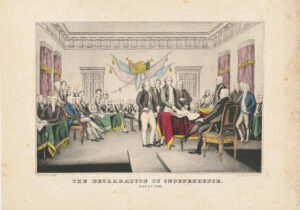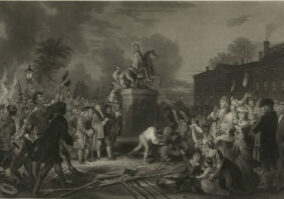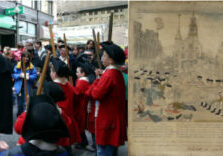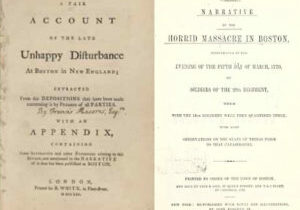Lesson Plans
The Declaration of Independence: Created Equal?
Through discussion and primary source analysis, students investigate Thomas Jefferson's efforts to deal with the complex issues of equality and slavery in the Declaration of Independence. After, students rewrite the Declaration of Independence (or portions of it) to fit a contemporary society and may also stage a mock trial with the students playing the roles of Jefferson and others and Library of Congress primary sources serving as evidence.
When Washington Crossed the Delaware
Pair the picture book, When Washington Crossed the Delaware, with primary sources to have students practice close reading of both texts and maps while investigating the events leading up to and following this key accomplishment in the Revolutionary War. After, students can research a current event and create a map based on their learning along with a curator's note that briefly describes its value; create a gallery walk of student work.
Pulling Down the Statue
Students analyze, then compare and contrast primary source images to investigate the historical removal of a monument. Next students read articles to to investigate contemporary events related to statue removals, then write an op-ed article that links their study of the past to the present situation.
News, Perspective, Bias – Beginning
Through the lens of the Three Little Pigs and the Boston Massacre, students think critically about how perceptions of events are shaped by the storyteller, then consider the importance of taking multiple perspectives into account when reviewing stories and drawing conclusions about events.
News, Perspective, Bias – Intermediate
Through the lens of the Boston Massacre, students think critically about presenter bias and how it can influence public perception. Next, they compare and contrast headlines presented by different news outlets and reflect on the importance of recognizing bias and taking multiple perspectives into account when reviewing stories and drawing conclusions about events.
News, Perspective, Bias – Advanced
Through the lens of the Boston Massacre, students think critically about presenter bias and confirmation bias to understand how they can influence public perception. Next, they compare and contrast contemporary news stories presented by different outlets and reflect on the importance of recognizing bias and taking multiple perspectives into account when reviewing stories and drawing conclusions about events.






